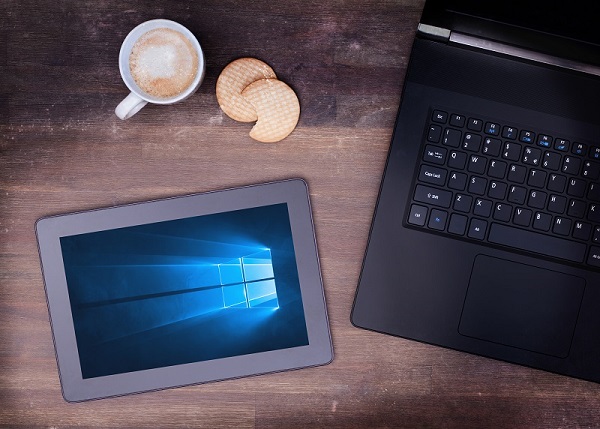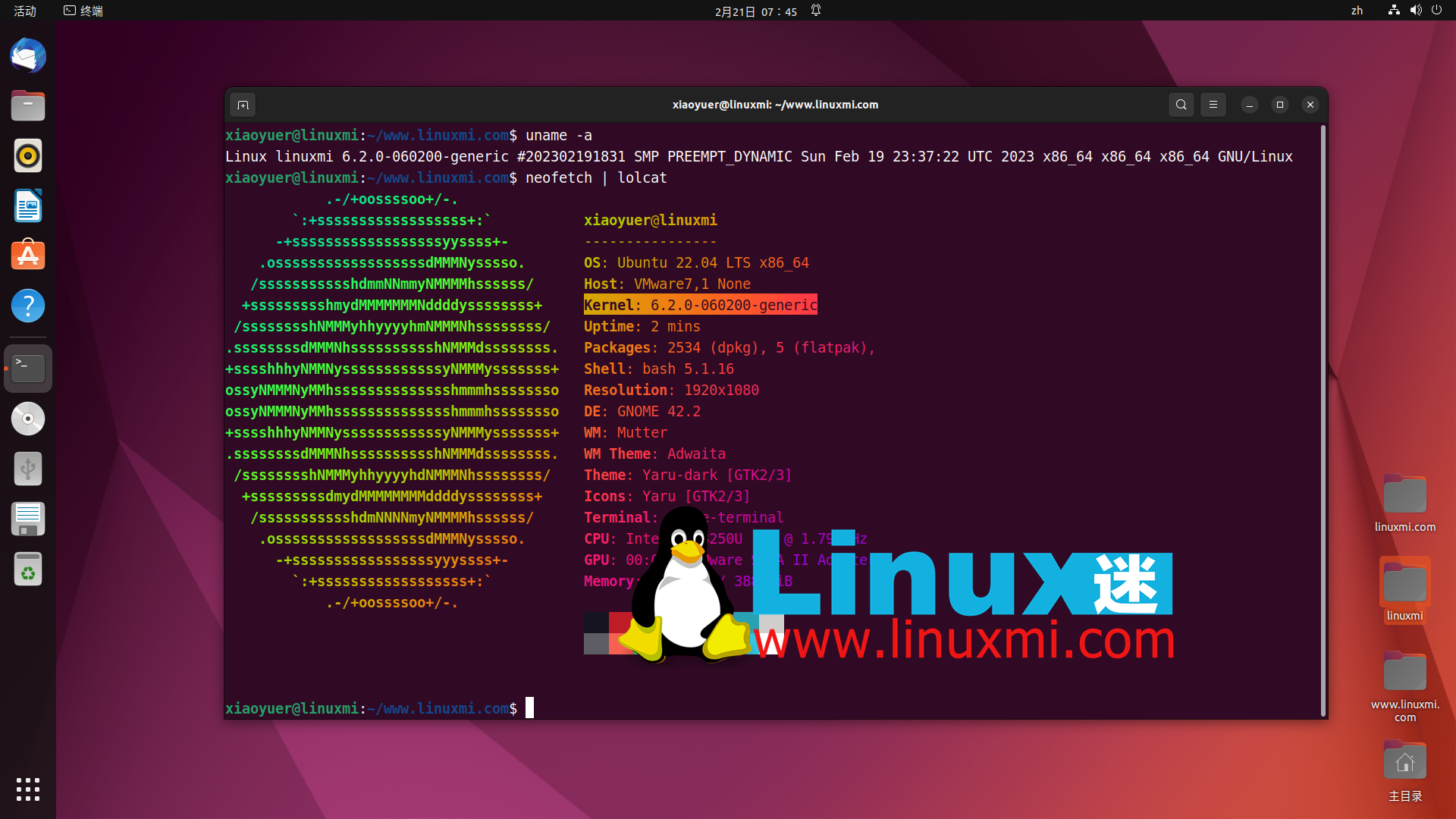Five reasons why you should update your Linux kernel
The Linux kernel is the most important part of the distribution, it controls everything from resource allocation to RGB keyboard drivers.
The Linux kernel continues to receive regular updates that include bug fixes, enhancements to advanced features, and many other enhancements. While no one is forcing you to update to the latest Linux kernel, here are five good reasons why you should.

People often say that Linux is not actually a complete operating system. This is because Linux refers to the kernel of the operating system and does not include other necessary software and tools. Many distributions simply consist of a set of software and package managers that allow you to interact with the underlying kernel.
The working principle of the Linux kernel can be summarized as managing system resources, communicating with peripheral devices, and handling networks and file systems.
Your distribution is useless without the kernel, but neither is the kernel without the tools packaged in the distribution.

1. The kernel of your distribution may be out of date before installation.
All Linux distributions come with a version of the Linux kernel, and many Popular distributions have their own dedicated kernels, based on the mainline Linux kernel. The operating system distribution ships with a kernel that has been extensively tested to ensure there are no compatibility issues, and is therefore stable and functioning properly.
However, stability comes at the expense of newer features. Since stable release kernels are unlikely to keep up with updates to the mainline kernel, you may miss out on the latest features.
2. New kernels support newer hardware
Hardware manufacturers continue to make progress, pushing the limits of what personal computers can achieve. A new generation of graphics cards is designed to render games with dazzling levels of realism, and new types of memory promise higher clock speeds and lower latency.
In order for a Linux distribution to interact effectively with new hardware, it requires corresponding drivers, which may not be included in older versions of the kernel. While you can apply patches to add new features and hardware support, it's usually worth updating the kernel entirely to ensure it supports all your hardware with the latest patches.
3. Upgrade the Linux kernel to prevent vulnerabilities
No software is perfect, and no developer can predict how hackers will abuse their software in the control room. Exploiting memory issues to execute arbitrary code and exploiting vulnerabilities broadly can leave your system vulnerable to malware.
While there have been few successful attacks on the Linux desktop, the Linux kernel is not immune to hackers, crackers, and criminals looking to break into your computer.
Some of the major security vulnerabilities discovered over the years include Dirty COW (a privilege escalation vulnerability that has been exploited for more than a decade), Specter and Meltdown (CPU vulnerabilities affecting multiple platforms), Segment smack, and Dirty Pipe A vulnerability that allows unprivileged users to execute malicious code.
If you upgrade to the latest kernel version, you can be sure to have the most secure version, with all detected vulnerabilities patched and removed.
4. Solve annoying bugs through kernel updates
Bugs may not always cause security problems, but they are often annoying. Things don't work as expected, or produce unexpected results.
Especially errors related to audio and video playback and power issues. Bugs happen, and like real bugs, they appear in unexpected places. If you are using an older kernel version from the early 2000s, you may have noticed that leap seconds can cause kernel panics.
Serious bugs are fixed as soon as they are discovered, and usually updating to the latest Linux kernel results in a more stable system.
5. Kernel updates with new features
Linux kernel updates are not just about making your distribution safe and bug-free. They can make your system run faster and better.
Typically, new kernels bring performance improvements, improved CPU efficiency, new file type compatibility and hardware support.
Impress your friends by using the latest Linux kernel
By using Linux on your desktop, you have become a member of an elite, and a very small number. Your Windows-using friends may think you're a tech wizard.
Impress them further by learning about the specific improvements the latest kernel brings. If you want to show off your technical proficiency, mention that you use Arch.
The above is the detailed content of Five reasons why you should update your Linux kernel. For more information, please follow other related articles on the PHP Chinese website!

Hot AI Tools

Undresser.AI Undress
AI-powered app for creating realistic nude photos

AI Clothes Remover
Online AI tool for removing clothes from photos.

Undress AI Tool
Undress images for free

Clothoff.io
AI clothes remover

AI Hentai Generator
Generate AI Hentai for free.

Hot Article

Hot Tools

Notepad++7.3.1
Easy-to-use and free code editor

SublimeText3 Chinese version
Chinese version, very easy to use

Zend Studio 13.0.1
Powerful PHP integrated development environment

Dreamweaver CS6
Visual web development tools

SublimeText3 Mac version
God-level code editing software (SublimeText3)

Hot Topics
 1378
1378
 52
52
 Difference between centos and ubuntu
Apr 14, 2025 pm 09:09 PM
Difference between centos and ubuntu
Apr 14, 2025 pm 09:09 PM
The key differences between CentOS and Ubuntu are: origin (CentOS originates from Red Hat, for enterprises; Ubuntu originates from Debian, for individuals), package management (CentOS uses yum, focusing on stability; Ubuntu uses apt, for high update frequency), support cycle (CentOS provides 10 years of support, Ubuntu provides 5 years of LTS support), community support (CentOS focuses on stability, Ubuntu provides a wide range of tutorials and documents), uses (CentOS is biased towards servers, Ubuntu is suitable for servers and desktops), other differences include installation simplicity (CentOS is thin)
 Centos stops maintenance 2024
Apr 14, 2025 pm 08:39 PM
Centos stops maintenance 2024
Apr 14, 2025 pm 08:39 PM
CentOS will be shut down in 2024 because its upstream distribution, RHEL 8, has been shut down. This shutdown will affect the CentOS 8 system, preventing it from continuing to receive updates. Users should plan for migration, and recommended options include CentOS Stream, AlmaLinux, and Rocky Linux to keep the system safe and stable.
 Detailed explanation of docker principle
Apr 14, 2025 pm 11:57 PM
Detailed explanation of docker principle
Apr 14, 2025 pm 11:57 PM
Docker uses Linux kernel features to provide an efficient and isolated application running environment. Its working principle is as follows: 1. The mirror is used as a read-only template, which contains everything you need to run the application; 2. The Union File System (UnionFS) stacks multiple file systems, only storing the differences, saving space and speeding up; 3. The daemon manages the mirrors and containers, and the client uses them for interaction; 4. Namespaces and cgroups implement container isolation and resource limitations; 5. Multiple network modes support container interconnection. Only by understanding these core concepts can you better utilize Docker.
 How to install centos
Apr 14, 2025 pm 09:03 PM
How to install centos
Apr 14, 2025 pm 09:03 PM
CentOS installation steps: Download the ISO image and burn bootable media; boot and select the installation source; select the language and keyboard layout; configure the network; partition the hard disk; set the system clock; create the root user; select the software package; start the installation; restart and boot from the hard disk after the installation is completed.
 How to use docker desktop
Apr 15, 2025 am 11:45 AM
How to use docker desktop
Apr 15, 2025 am 11:45 AM
How to use Docker Desktop? Docker Desktop is a tool for running Docker containers on local machines. The steps to use include: 1. Install Docker Desktop; 2. Start Docker Desktop; 3. Create Docker image (using Dockerfile); 4. Build Docker image (using docker build); 5. Run Docker container (using docker run).
 What are the backup methods for GitLab on CentOS
Apr 14, 2025 pm 05:33 PM
What are the backup methods for GitLab on CentOS
Apr 14, 2025 pm 05:33 PM
Backup and Recovery Policy of GitLab under CentOS System In order to ensure data security and recoverability, GitLab on CentOS provides a variety of backup methods. This article will introduce several common backup methods, configuration parameters and recovery processes in detail to help you establish a complete GitLab backup and recovery strategy. 1. Manual backup Use the gitlab-rakegitlab:backup:create command to execute manual backup. This command backs up key information such as GitLab repository, database, users, user groups, keys, and permissions. The default backup file is stored in the /var/opt/gitlab/backups directory. You can modify /etc/gitlab
 How to mount hard disk in centos
Apr 14, 2025 pm 08:15 PM
How to mount hard disk in centos
Apr 14, 2025 pm 08:15 PM
CentOS hard disk mount is divided into the following steps: determine the hard disk device name (/dev/sdX); create a mount point (it is recommended to use /mnt/newdisk); execute the mount command (mount /dev/sdX1 /mnt/newdisk); edit the /etc/fstab file to add a permanent mount configuration; use the umount command to uninstall the device to ensure that no process uses the device.
 What to do after centos stops maintenance
Apr 14, 2025 pm 08:48 PM
What to do after centos stops maintenance
Apr 14, 2025 pm 08:48 PM
After CentOS is stopped, users can take the following measures to deal with it: Select a compatible distribution: such as AlmaLinux, Rocky Linux, and CentOS Stream. Migrate to commercial distributions: such as Red Hat Enterprise Linux, Oracle Linux. Upgrade to CentOS 9 Stream: Rolling distribution, providing the latest technology. Select other Linux distributions: such as Ubuntu, Debian. Evaluate other options such as containers, virtual machines, or cloud platforms.




